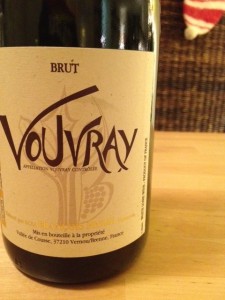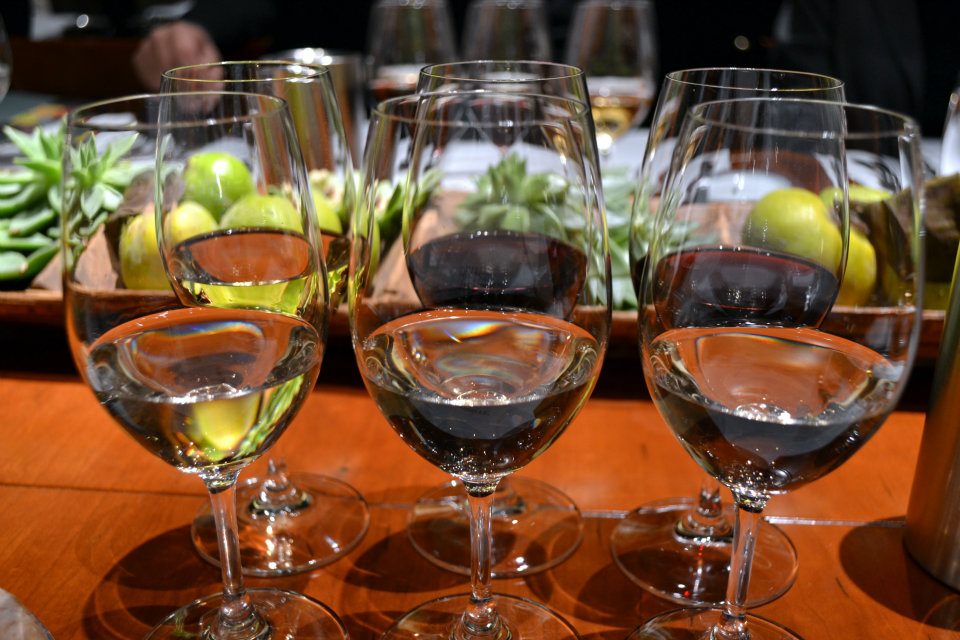I have to admit, I am more than partial to Croatians (full disclosure: I am dating one), even though I have yet to visit its famed shores. So I couldn’t pass up the opportunity to sit down for a meal with three Croatian winemakers at Gramercy Tavern.
Author Archives: Sarah
New Year’s Sparklers
Possibly one of my favorite New Year’s Eve memories is a house party in Brooklyn with dear friends, fancy outfits, even fancier food, and Champagne — in fact, a bottle of Champagne, not Prosecco or Cava or any other sparkler, was your ticket in. What started as a tasting exercise (and way to obliterate the memory of the lobster that just would not die) turned into a raucous good time in the early hours of 2010. Continue reading
Sweet Wines for Your Pumpkin Pie
Sweet wines have a bad reputation in the United States as cheap, watered-down alternatives to the more refined, dry styles. Keep your sticky white zins to yourself, I thought when I began getting interested in wine. I’ll drink my zippy sauvignon blancs and tannic cabernets. Continue reading
Pairing Notes: A Wintry Vegetarian Dinner
Putting together a pairing for this menu, which features “rich Mediterranean-inspired flavors,” I wanted to focus on the best ways to highlight its risotto centerpiece:
The citrusy creaminess of the lemon risotto needs a comparable wine in both weight and flavor. We recommend a heftier white like a Fumé Blanc from California, a richer style of Sauvignon Blanc that’s aged in oak. For something a little more festive, try a sparkling wine from Italy’s Franciacorta region in Lombardy, where risotto is a traditional dish; the bubbles will provide a lighter complement to the dish, refreshing the palate between bites.
François Pinon Sparkling Vouvray Brut
 A sparkling wine made by the méthode traditionelle in the Loire Valley, this 100% Chenin Blanc has a pleasant, musty nose with a hint of lemon from its extended lees contact during the aging process.
A sparkling wine made by the méthode traditionelle in the Loire Valley, this 100% Chenin Blanc has a pleasant, musty nose with a hint of lemon from its extended lees contact during the aging process.
The wine is medium-bodied (13% alcohol) – weighty, but the bubbles offer a delicious, refreshing bite. Rich hints of chamomile honey are cut off by its sharp, acidic finish.
An excellent pairing for creamier dishes like risotto alla milanese.
4 out of 5 stars
Imported by Louis/Dressner
Txakolí: Summer’s Coolest Wine
Even though I was born and raised in Atlanta, I’ve never tolerated hot weather very well. I kept my childhood room as cold as a meat locker, and now as an adult, I seek out more grown-up ways to stay cool. Nothing snaps me out of my heat-induced stupor like a cold, zippy wine late in the haze of the day. This summer, my perfect refreshing wine has been Txakolí, the effervescent, bone-dry Basque white that makes an ideal toast to the last days of the season.
I discovered Txakolí (pronounced cha-co-lee) a few years ago during a meal at Mercat, a Barcelona-inspired Spanish restaurant in downtown New York City, where the bartender suggested I try it when I asked for something crisp and dry. To enhance its natural effervescence (it’s not quite as bubbly as Champagne, but there’s definitely fizz in there), the wine is traditionally poured with one hand holding the bottle far above your head, and the other hand holding the glass far below. A T-shaped spout helps aerate the wine even more, and brings the bubbles to life. Sitting at the bar at Mercat, I was amazed while watching my bartender pour, impressed that she let not a single drop fall to the floor. Continue reading
Drinking the Wines of Lebanon
To be honest, for a long time I never really thought about Lebanese wines. In the shop where I used to work, we carried a few nominal bottles, but they’d never piqued my interest, and generally when I thought of great wines with deep heritages, my mind didn’t jump to Lebanon. But as it turns out, the country’s vineyards and winemaking have one of the longest-stretching viticultural histories on the planet, through Biblical times, the Roman Empire, and even into the Middle Ages — which is about when historical records began chronicling the practice of winemaking in Burgundy.
The wines of Lebanon are often compared to those of Bordeaux and the Rhône, perhaps due to the country’s political and cultural relations with the French over the past century, but they are something uniquely their own. These so-called “Ancient World” wines are on the rise, and today, about 35 wineries are currently producing wine in and around Lebanon’s fertile Bekaa Valley, whose winter rain and hot, summer sunshine help the grapes ripen easily. Continue reading

